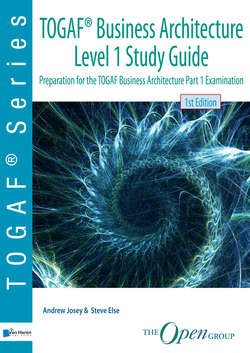Читать книгу TOGAF® Business Architecture Level 1 Study Guide - Andrew Josey - Страница 19
На сайте Литреса книга снята с продажи.
2.5 An Introduction to the TOGAF ADM
ОглавлениеThe TOGAF Architecture Development Method (ADM) forms the core of the TOGAF standard and is a method for deriving organization-specific Enterprise Architecture. It is the result of contributions from many architecture practitioners.
The ADM provides a tested and repeatable process for developing architectures. The ADM includes establishing an architecture framework, developing architecture content, transitioning, and governing the realization of architectures. All of these activities are carried out within an iterative cycle of continuous architecture definition and realization that allows organizations to transform their enterprises in a controlled manner in response to business goals and opportunities.
The ADM is described as a number of phases within a process of change illustrated by an ADM cycle graphic (see Figure 2).
Figure 2: The TOGAF ADM
The Preliminary Phase describes the preparation and initiation activities required to create an Architecture Capability, including the customization of the TOGAF framework, and the definition of Architecture Principles.
Phase A: Architecture Vision describes the initial phase of an Architecture Development Cycle. It includes information about defining the scope, identifying the stakeholders, creating the Architecture Vision, and obtaining approvals.
Phase B: Business Architecture describes the development of a Business Architecture to support an agreed Architecture Vision.
Phase C: Information Systems Architectures describes the development of Information Systems Architectures for an architecture project, including the development of Data and Application Architectures.
Phase D: Technology Architecture describes the development of the Technology Architecture for an architecture project.
Phase E: Opportunities and Solutions describes the process of identifying major implementation projects and grouping them into work packages that deliver the Target Architecture defined in the previous phases.
Phase F: Migration Planning describes the development of a detailed Implementation and Migration Plan that addresses how to move from the Baseline to the Target Architecture.
Phase G: Implementation Governance describes architectural oversight of the implementation.
Phase H: Architecture Change Management describes procedures for managing change to the new architecture.
Requirements Management describes the process of managing architecture requirements throughout the ADM.
